Journal of Cardiovascular Medicine and Cardiology
Isolated Non-Compaction of Right Ventricular Myocardium, A Rare Congenital Anomaly and Role of Echocardiogram: A Case Report
Sudeb Mukherjee1* and SC Mandal2
2Professor and HOD, Department of Cardiology, ICVS, IPGME&R-SSKM Hospital, Kolkata, West Bengal, India
Cite this as
Mukherjee S, Mandal SC (2020) Isolated Non-Compaction of Right Ventricular Myocardium, A Rare Congenital Anomaly and Role of Echocardiogram: A Case Report. J Cardiovasc Med Cardiol 7(2): 122-124. DOI: 10.17352/2455-2976.000125The ventricular non-compaction or spongy myocardium is a rare congenital cardiomyopathy which is caused by defective morphogenesis of myocardium during embryonic life. It is characterised by excessive, coarse trabeculations within ventricular myocardium beyond papillary muscle insertion which communicates freely with the ventricular cavity. This carries high risk for development of serious arrhythmia, thromboembolic stroke, pump failure etc. Isolated LV involvement is the most common presentation (68%) and biventricular involvement is the next most common presentation (22-38%). Isolated non-compaction of RV myocardium is a rare anomaly. We are hereby presenting such a case.
Introduction
Non compaction of myocardium is not unknown to medical literature. The proper approach for diagnosis of noncompacted myocardium involves the elucidation prominent ventricular trabeculae and deep intertrabecular recesses on cardiac imaging1 that is thought to represent an abnormality of myocardial development. Echocardiographic findings are very much helpful to diagnose such entities as published by stollberger, et al. [1], chin, et al. [2]. There are reports of noncompaction of left ventricle in medical literature. However isolated right ventricular non compaction is rare. Here we have reported one such case reports of isolated right ventricular noncompaction cardiomyopathy.
Case report
A 50 years old, normotensive, non-diabetic patient presented with complaints of palpitation and shortness of breath for last 5 days. He was also complaining of sweating, dizziness during last few days back for which he was advised for an ECG by a physician he visited. After that he was referred to our hospital. ECG done there revealed regular wide QRS tachycardia with a HR of 170/minutes with Left Bundle Branch Block (LBBB) morphology (Figure 1). His Blood Pressure was 100/60 mm of Hg. Troponin T test was done which revealed value of 4 ng/ml. He was given standard treatments for Non ST Elevated Myocardial Infarction (NSTEMI). He was also started on amidarone infusion (300 mg over 30 min) which resulted in restoration of sinus rhythm. He was admitted in CCU and planned for coronary angiogram (CAG ). At that time ECG revealed normal sinus rhythm, low voltage complex, right ventricular hypertrophy (RVH) with strain pattern (Figure 2). Chest X- Ray (PA) view findings revealed cardiomegaly with upturned apex suggestive of RV enlargement. 2D transthoracic echocardiogram (TTE) was done. Most of the LV parameters were within normal limits with LVEF of 65% except grade I diastolic dysfunction. IVS was bulging towards LV during diastole. There was multiple honeycomb appearances in RV myocardium near RV apex dividing the RV myocardium into compacted and non-compacted zone (Figure 3). RA, RV were dilated with moderate to severe low pressure TR (Figure 4). Those cavities were freely communicating with RV cavity as proved by colour doppler echocardiogram with scale around 30-40 cm/sec (Figure 5) and with saline contrast Echo which showed air-bubbles freely entering into those inter-trabecular recess (Figure 6). No evidence of Intra-cardiac shunts are found. There was gross RV systolic dysfunction (TAPSE 14 mm, TASV 9 cm/sec). CAG revealed normal epicardial coronaries. Patient was advised for cardiac MRI but refused due to financial constraints.
Discussions
The ventricular non-compaction or spongy myocardium is a rare congenital cardiomyopathy which is caused by defective development of myocardium during embryonic life. In normal heart myocardium in both ventricles develops into a compacted layer over a trabeculated scaffold provided by connective tissue meshwork. This compaction starts in base and gradually goes towards apex. Arrest of this physiological process leads to non-compaction of ventricular myocardium distal to the insertions of papillary muscles mostly involving the infero-posterior walls of LV near apex. It is characterised by excessive, coarse trabeculations within ventricular myocardium beyond papillary muscle insertion which communicates freely with the ventricular cavity [1]. Isolated LV involvement is the most common presentation (68%) and biventricular involvement is the next most common presentation (22-38%) [3]. Isolated non-compaction of RV myocardium is a rare anomaly where it is not associated with any other anomaly [4]. The diagnosis is often difficult because RV is normally coarsely trabeculated which makes it difficult to differentiate from pathological trabeculations. The clinical presentation may due to heart failure symptoms (53%), ventricular tachycardia (41%), sudden cardiac death (35%), cardio-embolic events (24%), and syncope (18%) [5].
Familial recurrence was seen in 18% of the cases in the largest reported adult population with LVNC and in 50% of cases in paediatric populations [6].
Echocardiography has been the diagnostic modality of choice. According to Jenni, et al. [7], diagnostic criteria by 2D Echocardiography all of the following four points should be fulfilled before we can call it ventricular non-compaction a) Two layered structure of myocardium in systole formed by inner non-compacted layer and outer compacted layer with the ratio of the two > 2. b) Absence of any coexisting cardiac structural anomaly c). Numerous (At least four) course, deep, excessively prominent trabeculations. d) Freely communicating with ventricular cavity as proved by colour Doppler. In our case all four criteria has been fulfilled.
The differential diagnosis are normal ventricular trabeculations, intramyocardial hematoma following AMI, Fabry disease, Layered mural thrombus in apex, ARVD . Cardiac MRI has been increasingly used to diagnose or rule out ventricular non-compactionin cases where the 2D echo is not conclusive. However echocardiogram is one of the best method initially to diagnose such rare disease.
Author’s contributions
Sudeb Mukherjee – Conception and design, Acquisition of data, Analysis of data. Drafting the article.
S .C. Mandal- Critical revision, redefining several aspects and final approval of article.
We acknowledge contribution from all 4 persons for giving us consent to report this case.
- Stollberger C, Finsterer J, Blazek G (2002) Left ventricular hypertrabeculation/noncompaction and association with additional cardiac abnormalities and neuromuscular disorders. Am J Cardiol 90: 899-902. Link: https://bit.ly/2WpvG6m
- Chin TK, Perloff JK, Williams RG, Jue K, Mohrmann R (1990) Isolated noncompaction of left ventricular myocardium. A study of eight cases. Circulation 82: 507-513. Link: https://bit.ly/2LndyDM
- Junga G, Kneifel S, Von Smekal A, Steinert H, Bauersfeld U (1999) Myocardial ischaemia in children with isolated ventricular non-compaction. Eur Heart J 20: 910-916. Link: https://bit.ly/35SJB8a
- Ulusoy RE, Karslan N, Kirilmaz A (2006) Non-compaction of ventricular myocardium involving both ventricles. Eur J Echocardiography 7: 457-460. Link: https://bit.ly/2WRtZxu
- Cavusoglu Y, Ata N, Timuralp B, Gorenek B, Goktekin O, et al. (2003) Noncompaction of the ventricular myocardium: report of two cases with bicuspid aortic valve demonstrating poor prognosis and with prominent right ventricular involvement. Echocardiography 20: 379-383. Link: https://bit.ly/2LhEEfL
- Oeschslin E, Attenhofer C, Rohas J, Kauffman P, Jenni R, et al. (2000) Long term follow-up of 34 adults with isolated left ventricular noncompaction: a distinct cardiomyopathy with poor prognosis. J Am CollCardiol 36: 493-500. Link: https://bit.ly/2YWIvqu
- Jenni R, Oechslin E, Schneider J, AttenhoferJost C, Kaufmann PA (2001) Echocardiographic and pathoanatomical characteristics of isolated left ventricular non-compaction: a step towards classification as a distinct cardiomyopathy. Heart 86: 666-671. Link: https://bit.ly/2YUfT15

Article Alerts
Subscribe to our articles alerts and stay tuned.
 This work is licensed under a Creative Commons Attribution 4.0 International License.
This work is licensed under a Creative Commons Attribution 4.0 International License.
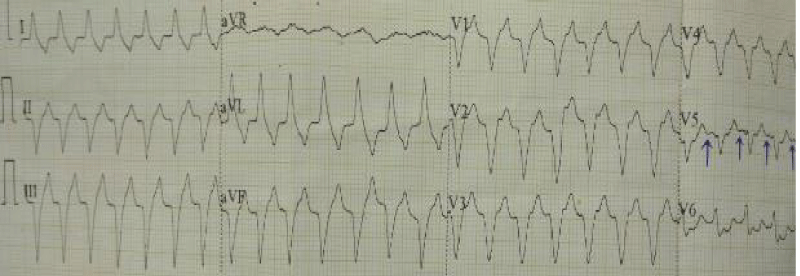
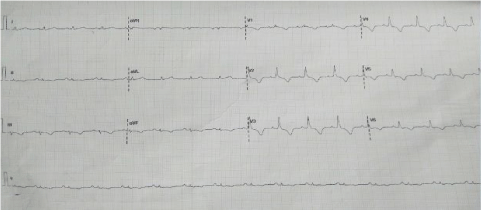
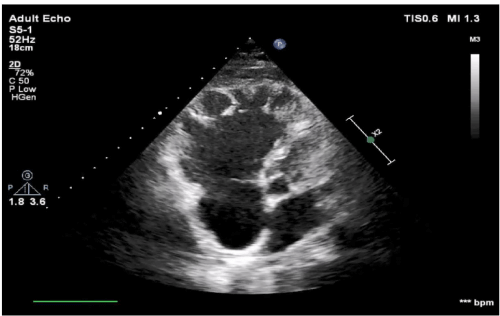
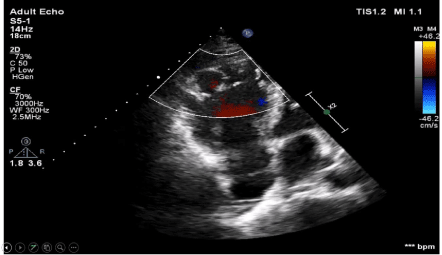

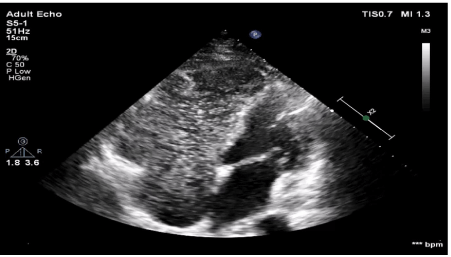
 Save to Mendeley
Save to Mendeley
